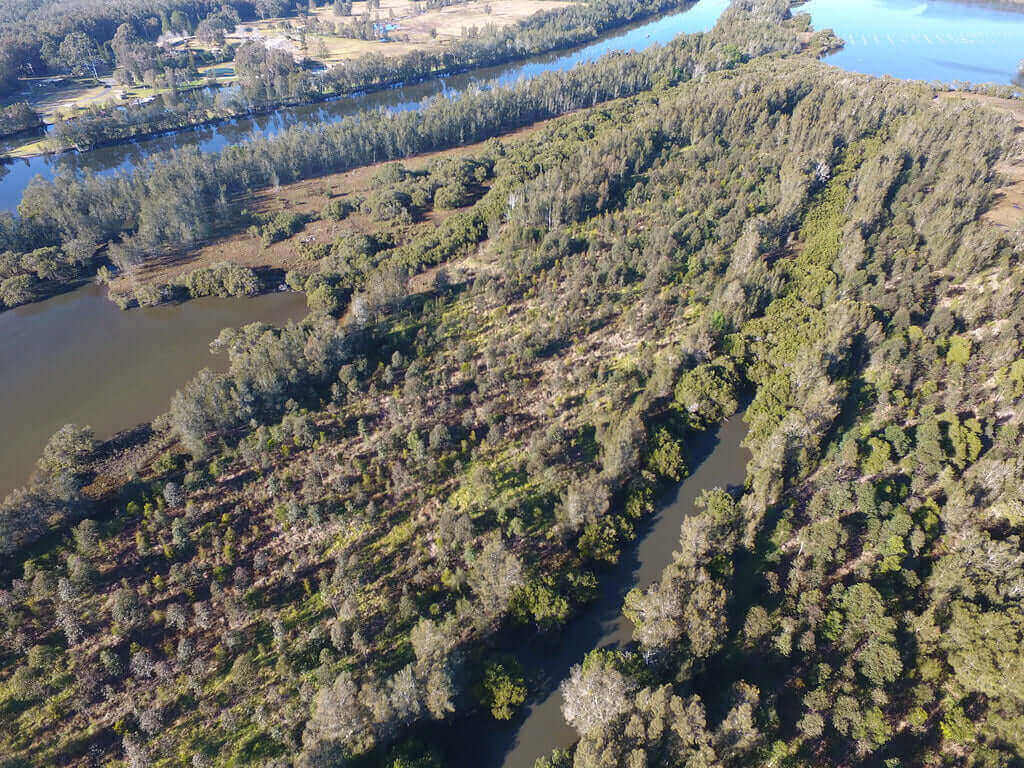A lot can happen in just two years. For the MidCoast Council along the New South Wales coast, two years after teaming up with Greenfleet to restore and re-vegetate, all are rejoicing in the extraordinary outcomes.
MidCoast Council understands the importance of sustaining their surrounding environment for ongoing economic success and a healthy natural way of life - for residents, visitors and of course wildlife. Joining forces with Greenfleet was one big aspect of Council’s plans to turn back time and allow nature to do its thing again. In addition, the team developed an array of projects that would ensure the protection and ongoing - or ‘on-growing’ - success to allow ecosystems to flourish and improve water quality.
And what a success! A whopping 17,150 trees were planted in 2014 and two years later 86% of the trees were still going (with most losses only occurring from a large flood event) – an excellent result. A range of mixed Eucalypt Forest and Swampy Forest/Woodland vegetation types were restored.
Mat Bell from MidCoast Council is a key supporter in the Great Lakes project and feels strongly about restoring and revegetating these areas with the types of trees and shrubs that originally grew there. By matching the plant species to the conditions of the wetlands, the success rate of a growing forest is much higher.
“We want to establish the conditions that will facilitate the delivery of ecosystem services provisions of the planted landscape for water quality protection but also for biodiversity conservation and carbon sequestration”, says Mat Bell.
The Great Lakes region itself has over 460 species of native animals including mammals, frogs, reptiles and birds, with 83 of these listed as threatened. A year on, and the spy cameras have detected a number of threatened species, including the Spotted-tailed Quoll, Squirrel Glider and Long-nosed Potoroo, venturing around the edges of our forests, slowly making their way into these maturing habitats.
The outcomes are significant and show just how much of an impact the native revegetation work has created for such an important biodiverse area, within a short space of time. “With the Greenfleet partnership, we have installed biodiverse plantings in the cleared areas”, Mat Bell added.
The rippling effects of this project includes carbon sequestration, biodiversity protection and provision of green spaces, not to mention many more hidey-holes for the native furry friends living in the area.
The site was last visited in 2018, and the transformation is quite amazing. The aerial photo at the top of this article accurately shows how well the trees are growing and how well the site is doing as a whole.
This was another great success for Greenfleet! Partnering with local councils with shared vision to restore our natural environment and ensure a positive climate for the future, gives hope that the Greenfleet mission is achievable and we are gaining supporters and moving forward as a non-profit environmental organisation.
“If we respect nature, remove and protect it from degrading processes and then if we provide for the conditions for nature and natural processes to return to impaired landscapes, then we can reverse the impacts of past disturbances. We can achieve really positive outcomes”, summarises Mat Bell.

Location Size
Planting Dates
Species
- Acacia maidenii
- Angophera costata
- Arytera distylis
- Banksia integrifolia
- Banksia serrata
- Callistemon salignus
- Cassine australis
- Casuarina torulosa
- Corymbia intermedia
- Cupaniopsis anacardioides
- Dysoxylum fraserianum
- Eucalyptus amplifolia
- Eucalyptus grandis
- Eucalyptus microcorys
- Eucalyptus parramattensis subsp decadens
- Eucalyptus pilularis
- Eucalyptus resinifera
- Eucalyptus robusta
- Eucalyptus signata
- Eucalyptus tereticornis
- Glochidion ferdinandi
- Hybiscus spp
- Hymenosporum flavum
- Lophostemon confertus
- Melaleuca armillaris
- Melaleuca quinquinervia
- Melaleuca styphiloides
- Omalanthus populafolia
- Podocarpus elatus
- Scolopia braunii
- Streblus brunoianus
- Syzigium panniculata
- Toona ciliata
- Waterhousia floribunda




